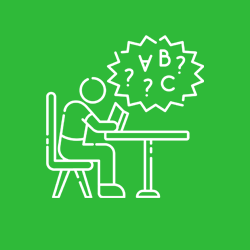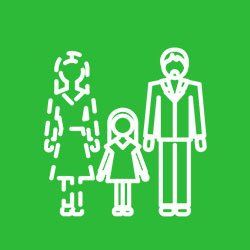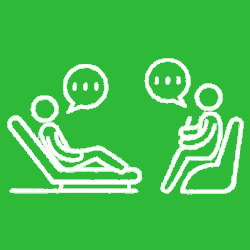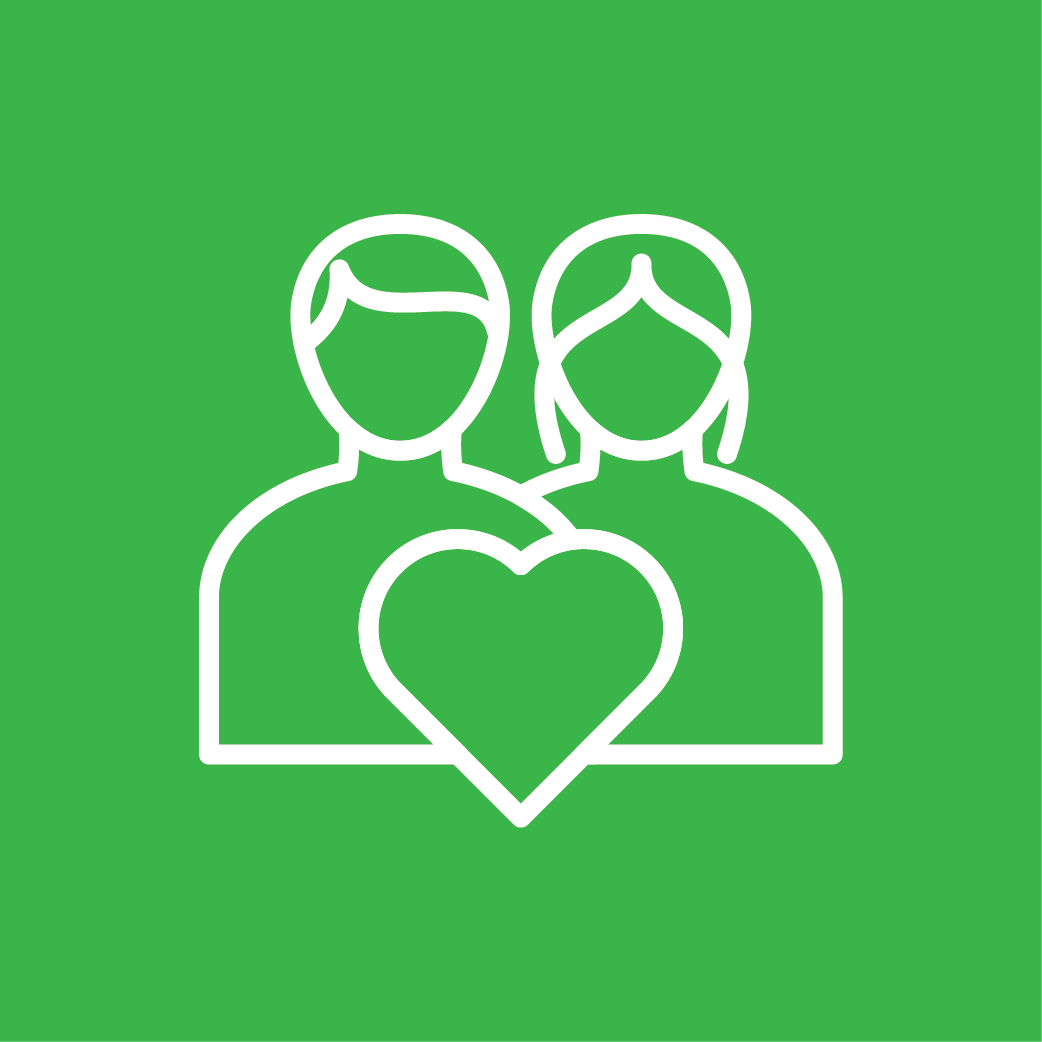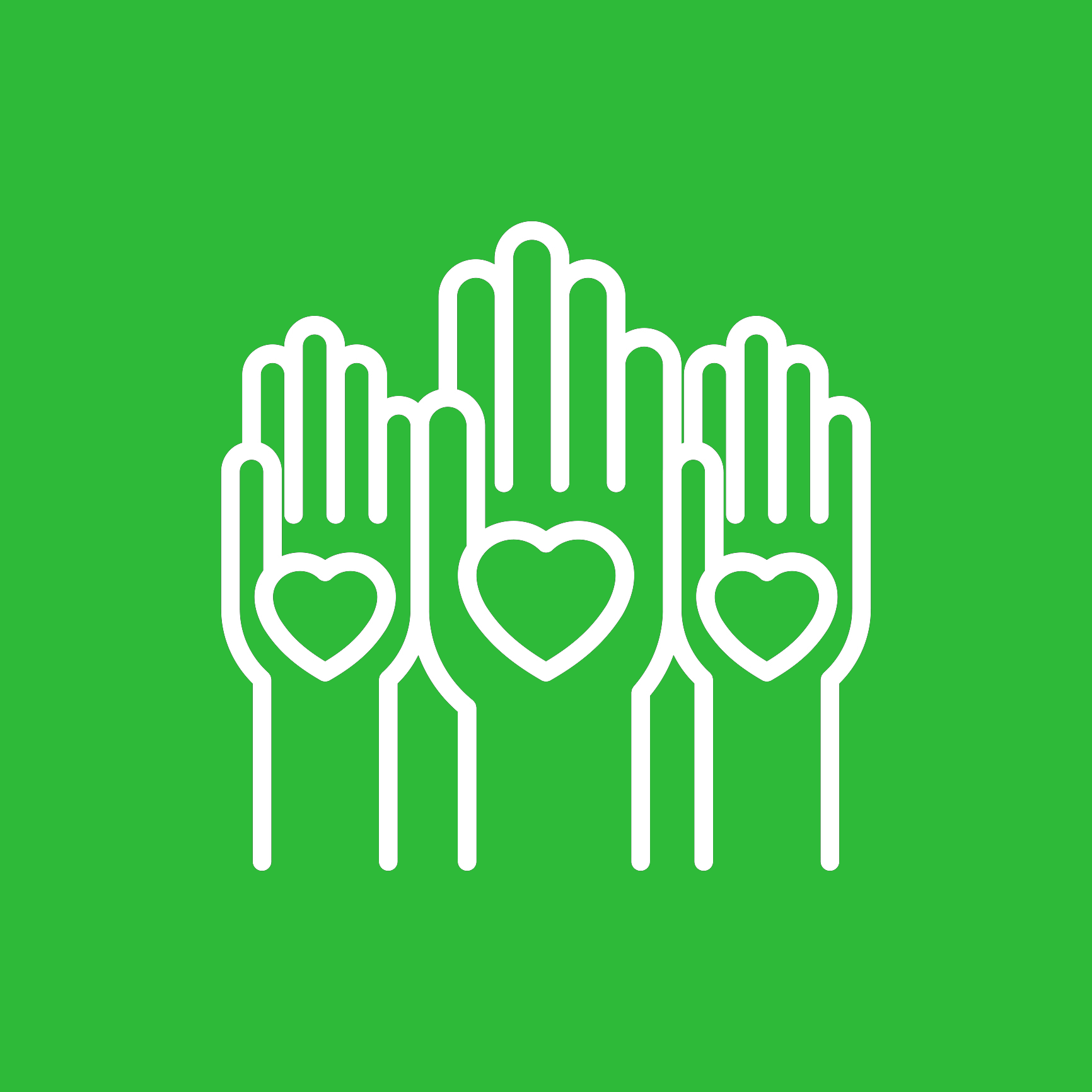Therapists Services Near Round Rock, Texas
-
Attention Deficit Hyperactivity Disorder (ADHD)
Attention-deficit/hyperactivity disorder (ADHD) is a chronic condition that affects millions of children and often continues into adulthood. ADHD includes a combination of persistent problems, such as difficulty sustaining attention, hyperactivity and impulsive behavior.
Children with ADHD may also struggle with low self-esteem, troubled relationships and poor performance in school. Symptoms sometimes lessen with age. However, some people never completely outgrow their ADHD symptoms. But they can learn strategies to be successful.
While treatment won't cure ADHD, it can help a great deal with symptoms. Treatment typically involves medications and behavioral interventions. Early diagnosis and treatment can make a big difference in outcome.
Symptoms
The primary features of ADHD include inattention and hyperactive-impulsive behavior. ADHD symptoms start before age 12, and in some children, they're noticeable as early as 3 years of age. ADHD symptoms can be mild, moderate or severe, and they may continue into adulthood.
ADHD occurs more often in males than in females, and behaviors can be different in boys and girls. For example, boys may be more hyperactive and girls may tend to be quietly inattentive.
There are three subtypes of ADHD:
- Predominantly inattentive. The majority of symptoms fall under inattention.
- Predominantly hyperactive/impulsive. The majority of symptoms are hyperactive and impulsive.
- Combined. This is a mix of inattentive symptoms and hyperactive/impulsive symptoms.
Inattention
A child who shows a pattern of inattention may often:
- Fail to pay close attention to details or make careless mistakes in schoolwork
- Have trouble staying focused in tasks or play
- Appear not to listen, even when spoken to directly
- Have difficulty following through on instructions and fail to finish schoolwork or chores
- Have trouble organizing tasks and activities
- · Avoid or dislike tasks that require focused mental effort, such as homework
- Lose items needed for tasks or activities, for example, toys, school assignments, pencils
- Be easily distracted
- Forget to do some daily activities, such as forgetting to do chores
Hyperactivity and impulsivity
A child who shows a pattern of hyperactive and impulsive symptoms may often:
- Fidget with or tap his or her hands or feet, or squirm in the seat
- Have difficulty staying seated in the classroom or in other situations
- Be on the go, in constant motion
- Run around or climb in situations when it's not appropriate
- Have trouble playing or doing an activity quietly
- Talk too much
- Blurt out answers, interrupting the questioner
- Have difficulty waiting for his or her turn
- Interrupt or intrude on others' conversations, games or activities
Typical developmental behavior vs. ADHD
Most healthy children are inattentive, hyperactive or impulsive at one time or another. It's typical for preschoolers to have short attention spans and be unable to stick with one activity for long. Even in older children and teenagers, attention span often depends on the level of interest.
The same is true of hyperactivity. Young children are naturally energetic — they often are still full of energy long after they've worn their parents out. In addition, some children just naturally have a higher activity level than others do. Children should never be classified as having ADHD just because they're different from their friends or siblings.
Children who have problems in school but get along well at home or with friends are likely struggling with something other than ADHD. The same is true of children who are hyperactive or inattentive at home, but whose schoolwork and friendships remain unaffected.
Links & Artcles:
-
Anger Management
Definition of Anger: Anger is a very powerful feeling that can happen when you are frustrated, hurt, annoyed, or disappointed. Anger can help or hurt you, depending on how you react to it. If you can react without hurting someone else, it can be a positive feeling. If you hold your anger inside, it can lead to passive-aggressive behavior like ''getting back'' at people without telling them why or being critical and hostile. Knowing how to recognize and express these feelings in appropriate ways can help you handle emergencies, solve problems, and hold on to meaningful relationships.
Care Options: If you believe that your anger is out of control and is having a negative effect on your life and relationships, seek the help of a mental health professional. A psychologist or other licensed mental health professional can work with you to learn techniques for changing your thinking and your behavior. A mental health professional can help you deal with your anger in an appropriate way. Ask your doctor if medicines could be helpful. Sometimes, antidepressants, certain anticonvulsants, and low-dose antipsychotics can help manage sudden attacks of rage or anger. Avoid alcohol, short-acting benzodiazepines like Xanax, or street drugs that can make you say or do things more impulsively. Choose your therapist carefully, and make sure to talk to a professional who is trained to teach anger management and assertiveness skills.
Links & Articles:
-
Anxiety and Stress
Definition of Anxiety: a feeling of worry, nervousness, or unease, typically about an imminent event or something with an uncertain outcome
Definition of Stress: a state of mental or emotional strain or tension resulting from adverse or very demanding circumstances.
Care Options: Our therapy approach is directed by your particular challenges, needs and therapy goals. We can help to identify if stress is contributing to anxiety, depression, panic or other personal or relationship problems. When you understand how stress is impacting your life and how you have dealt with it up to this point, you can develop more effective stress management techniques. We take a strength-based approach to stress management therapy, identifying unique strategies to build on your skills and interests while improving areas of struggle or weakness.
Links & Articles:
Article: Understand Your Anxiety
-
Behavior
Definition of Behavioral Issues:
Behavioral disorders involve a pattern of disruptive behaviors in children that last for at least 6 months and cause problems in school, at home and in social situations. Behavioral disorders involve a pattern of disruptive behaviors in children that last for at least 6 months and cause problems in school, at home and in social situations. Nearly everyone shows some of these behaviors at times, but behavior disorders are more serious.
Behavioral disorders may involve:
- Inattention
- Hyperactivity
- Impulsivity
- Defiant behavior
- Drug use
- Criminal activity
- Behavioral disorders include:
- Attention Deficit Hyperactivity Disorder (ADHD)
- Oppositional Defiant Disorder (ODD)
- Conduct Disorder
Care Options for Mood Issues: Effective treatments for mood disorders can help individuals reach personal goals, build on their existing strengths, develop a person-centered wellness plan, and live life without the interference of symptoms. Relief of symptoms is only the first step to treating depression or bipolar disorder. A good treatment plan allows individuals to choose what wellness means to them and lead the best possible life they can.
Key components of a good treatment plan often include a combination of the following:
- Medications and/or technological treatments
- Talk therapy
- Support groups
- Support from family and friends
- Lifestyle changes
Finding the Right Treatment
Finding the right treatment for mood disorders can be tricky. Every individual may react differently to different medications and therapists. Medications can take 4 to 6 weeks to take effect, and the dosages and types of medication may need to be adjusted or changed before the individual can benefit. Some mood disorders may be resistant to treatment; in such cases, technological treatments could offer help.
Links & Articles:
-
Conflict Management
Definition of Conflict Management: Conflict resolution therapy, an approach to treatment that seeks to teach people conflict resolution skills, was designed primarily to help but can be used to address conflict in any situation, whether it arises in a family, between friends or romantic partners, at the workplace, or in any other situation.
People seeking treatment may find conflict resolution therapy can help them find solutions to certain challenging situations, relieve related mental health symptoms, and build a skill set that can be used to navigate future conflict.
Care Option for Managing Conflicts: Underlying this therapy model is the idea that conflict can cause negative emotions to form out of an individual's natural response system. When conflict is not resolved appropriately, negative emotional states may linger and develop into situations that can have serious, lasting consequences. Redirecting conflict with the proper skills, however, can help individuals address these challenges and achieve greater well-being as well as resolution.
Fight: The person attempts to dominate either the person or situation. This detour can lead to things like anger issues, paranoia, and borderline functioning.
Flight: The person attempts to avoid, distract, or run from the situation. This detour can lead to anxiety issues, including obsessive compulsive behavior.
Immobilization: The person is unable to act or make decisions. This detour can lead to anxiety issues, including panic attacks and isolation.
Submit: This person is overly accommodating and gives in too easily. This detour can lead to depression.
Conflict resolution skills training, which attempts to help people learn how to redirect conflict without emotional detouring, incorporates imagery and communication as the primary tools for exploration and resolution. Participants are taught skills that can allow them to unite when facing difficult situations, and they are encouraged to work together rather than combat each other in order to overcome difficult issues that may, if left unaddressed, lead to anxiety, depression, or contempt.
In the process of exploring these feelings, the therapist can help those in therapy discover win-win scenarios and help them identify new behavior patterns that may help them avoid engaging in negative actions and reactions in the future.
Links & Articles:
-
Court Ordered Therapy
In situations where a person’s mental illness put their life or the lives of others at risk, a court may intervene and order treatment. Known as mandatory or court-ordered therapy , these sessions can provide people struggling with mental health the break they need to get their life back on track.
How Is Court-Ordered Therapy Different From Normal Therapy?
Perhaps the defining difference between mandatory and voluntary therapy is the idea of confidentiality. In many court-ordered therapy situations, the therapist may be required to share relevant information with the court.
For example, if a person is ordered to remain sober and attend therapy sessions, a therapist will be forced to tell the court if their patient admits they have not remained sober.
Mandated therapists are also required to report any non-compliance or non-attendance, which can result in jail time for their patients.
Reasons For Court-Ordered Therapy
An Alternative To Jail
In certain situations, a judge may decide that, rather than spending time behind bars, an offender with a mental illness must attend court-ordered therapy sessions. These cases often occur when minor offenses are committed, or when a person frequently finds themselves in front of a judge.
Outpatient Treatment
Florida allows individuals with repeated hospitalizations and multiple criminal offenses to attend outpatient treatment programs under a court order. To receive outpatient treatment, a court must find that the struggling person would not be able to function in a community without supervision, has been repeatedly hospitalized or incarcerated, and is not likely to voluntarily participate in treatment.
Family Disputes
When parents file for divorce, a judge may request that either one or both parents attend therapy sessions. This occurs particularly in child custody disputes, where a judge may feel a parent requires a psychological evaluation.
Alternatively, a person may also need to attend treatment in order to regain custody of their children. In cases where child protective services are called to remove children from a parent, that person may have to prove they are sober for a set period of time in order to regain custody.
Sex Offenders
Some states require convicted sex offenders to undergo mandatory sex offender treatment programs.
Is Court-Ordered Therapy Required?
The simple answer is yes.
If a judge tells you to do something, it is in your best interest to comply. However, a therapist cannot physically compel you to stay in a therapy session. You always have the ability to consult a lawyer or acquire legal advice if you feel court-ordered therapy is unnecessary.
What Happens If You Do Not Attend Therapy?
If a judge orders you to willingly attend therapy, it is up to you to go. An officer of the court will not pick you up in a cop car and force you to attend therapy sessions.
However, if you opt not to attend your therapy sessions, the judge can do the following:
Find you in contempt of court.
Send you to prison, if the requirement for staying out of prison was attending court-ordered therapy.
Send you to an inpatient hospital if he or she finds you mentally unstable.
For family matters, attending court-ordered therapy can mean the difference between gaining or losing access to your children.
If you are ordered to attend therapy sessions and find yourself in a position where you are not able to afford therapy, it is up to you to communicate with the court and request assistance. Please give us a call and contact us if you need help!
-
Depression
Definition of Depression: Depression (major depressive disorder) is a common and serious medical illness that negatively affects how you feel, the way you think and how you act. Fortunately, it is also treatable. Depression causes feelings of sadness and/or a loss of interest in activities once enjoyed. It can lead to a variety of emotional and physical problems and can decrease a person’s ability to function at work and at home.
Depression symptoms can vary from mild to severe and can include:
- Feeling sad or having a depressed mood
- Loss of interest or pleasure in activities once enjoyed
- Changes in appetite — weight loss or gain unrelated to dieting
- Trouble sleeping or sleeping too much
- Loss of energy or increased fatigue
- Increase in purposeless physical activity (e.g., hand-wringing or pacing) or slowed movements and speech (actions observable by others)
- Feeling worthless or guilty
- Difficulty thinking, concentrating or making decisions
- Thoughts of death or suicide
Care Options: Medications and psychotherapy are effective for most people with depression. Your primary care doctor or psychiatrist can prescribe medications to relieve symptoms. However, many people with depression also benefit from seeing a psychiatrist, psychologist or other mental health professional.
If you have severe depression, you may need a hospital stay, or you may need to participate in an outpatient treatment program until your symptoms improve.
Here at EHT we have a therapy model that focuses on the whole you, building a blueprint that measures progress while outlining next steps in your journey.
Links & Articles:
-
Dialectical Behavior Therapy (DBT)
Dialectical behavior therapy (DBT) provides clients with new skills to manage painful emotions and decrease conflict in relationships. DBT specifically focuses on providing therapeutic skills in four key areas. First, mindfulness focuses on improving an individual's ability to accept and be present in the current moment. Second, distress tolerance is geared toward increasing a person’s tolerance of negative emotion, rather than trying to escape from it. Third, emotion regulation covers strategies to manage and change intense emotions that are causing problems in a person’s life. Fourth, interpersonal effectiveness consists of techniques that allow a person to communicate with others in a way that is assertive, maintains self-respect, and strengthens relationships.
When It's Used
DBT was originally developed to treat borderline personality disorder. However, research shows that DBT has also been used successfully to treat people experiencing depression, bulimia, binge-eating, bipolar disorder, post-traumatic-stress disorder. DBT skills are thought to have the capability of helping those who wish to improve their ability to regulate emotions, tolerate distress and negative emotion, be mindful and present in the given moment, and communicate and interact effectively with others.
What to Expect
DBT treatment typically consists of individual therapy sessions and DBT skills groups. Individual therapy sessions consist of one-on-one contact with a trained therapist, ensuring that all therapeutic needs are being addressed. The individual therapist will help the patient stay motivated, apply the DBT skills within daily life, and address obstacles that might arise over the course of treatment.
DBT skills group participants learn and practice skills alongside others. Members of the group are encouraged to share their experiences and provide mutual support. Groups are led by one trained therapist teaching skills and leading exercises. The group members are then assigned homework, such as practicing mindfulness exercises. Each group session lasts approximately two hours, and groups typically meet weekly for six months. Groups can be shorter or longer, depending on the needs of the group members. DBT can be delivered by therapists in many ways. For instance, some people complete the one-on-one therapy sessions without attending the weekly skills group. Others might choose the group without regular one-on-one sessions.
How It Works
DBT is a cognitive-behavioral treatment developed by Marsha Linehan, Ph.D., in the 1980s to treat people with borderline personality disorder. Those diagnosed with BPD often experience extremely intense negative emotions that are difficult to manage. These intense and seemingly uncontrollable negative emotions are often experienced when the individual is interacting with others—friends, romantic partners, family members. People with borderline often experience a great deal of conflict in their relationships.
As its name suggests, DBT is influenced by the philosophical perspective of dialectics: balancing opposites. The therapist consistently works with the individual to find ways to hold two seemingly opposite perspectives at once, promoting balance and avoiding black and white—the all-or-nothing styles of thinking. In service of this balance, DBT promotes a both-and rather than an either-or outlook. The dialectic at the heart of DBT is acceptance and change.
What to Look for in a Dialectical Behavior Therapist
DBT assumes that effective treatment, including group skills training, must pay as much attention to the behavior and experience of providers working with clients as it does to clients’ behavior and experience. Thus, treatment of the providers is an important part of any DBT program, and therapists should practice the skills themselves. They need to know basic behavior therapy techniques and DBT treatment strategies.
Article:
-
Divorce Recovery
People may seek therapy to help them decide if they should leave a marriage. Others may seek counseling for help changing from married to single life. One-on-one or couples therapy can help you work toward either of these goals.
Therapy can teach coping skills that may help people work toward a new life. It could help someone have a healthier outlook on their divorce. Therapy for divorce can make people feel encouraged and empowered. It can be a safe place to share feelings and thoughts. This can be helpful during what is often a difficult time.
Why choose Therapy for Divorce:
When a marriage ends, it can be traumatic for both partners. Divorce can be mentally, physically, and financially demanding. To cope with this, a couple who is divorcing may choose to begin therapy. Divorce therapy is often done on a one-on-one basis. A person going through divorce may feel guilt, fear, anxiety, depression and grief. Working with a therapist can provide a goal and rational perspective. It can arm a person with skills to work through the difficulties of the divorce. Those who use therapy to help them get over a divorce can often benefit. They may come to learn more about themselves. The change divorce brings can be a chance for personal growth and development.
Types of Therapy for Divorce:
• Individual therapy
Divorce may contribute to certain mental health conditions. These can include depression, anxiety, or other conditions. Some perceive divorce as a personal failure. Therapy can help people work through those feelings and make sense of the divorce. It may help people gain a new perspective. People who have divorced may learn about their needs and dislikes in partnerships. They may gain a deeper knowledge of themselves.
• Couples therapy
Therapy is also available for couples going through a divorce. This type of therapy may facilitate a healthy and constructive divorce. A divorce therapist can act as a sort of mediator. They can set guidelines to ensure the divorce happens with less negative impact. Therapists can also help address pertinent issues. These can include living arrangements, financial obligations, and parenting.
• Family therapy
Therapy can be important for children whose parents are divorcing. Parents may often be consumed with their own feelings during a divorce. They might overlook the emotional state of their children. Divorce can cause children to feel confusion, guilt, loss, pain, or abandonment. Children may not be sure which parent they should "choose," or be loyal to. They might also worry they are the cause of the divorce. When parents are aggressive with each other, a child may feel even more fearful. A child who hears parents argue about custody might start to feel unwanted. They may worry they are to blame for the separation. Family therapy lets all family members share their feelings about the divorce. This can help everyone process their emotions and adjust to the changes.
-
Emotional Support Animal
ECO-HEALTH Therapy is now offering services to provide clients with emotional support animals as part of their care and healing. Please let your therapist know if you would like to get an ESA letter and our staff will connect you with our in house experts to provide the service. We are cheaper and faster than other resources out there. We also will take in clients who are not receiving therapy to help you in the journey you are currently on. Please contact us for more information.
How to Get an Emotional Support Animal
Are you interested in getting an emotional support animal (ESA)? Wondering what type of animal can become an ESA? Or are you ready to get an ESA and want to make sure you are doing things the right way?
In this article, we will cover how to get an emotional support animal and how to make an animal companion a legitimate ESA by qualifying for an ESA letter. We will also briefly summarize some of the rules and regulations that apply to ESAs to help you understand what rights you have as an ESA owner.
For those unfamiliar with ESA rules, emotional support animals have the right to accompany their owners in housing (even in buildings with no-pets policies) under the Fair Housing Act and on airlines with ESA programs. Both federal and state laws give special rights to owners with mental or emotional disabilities that use a companion animal for support.
Valid emotional support animals are not considered pets. They are assistance animals that help individuals have an equal opportunity to enjoy housing to the same extent that non-disabled people can. That means a landlord cannot restrict an ESA because it is a certain breed or charge fees or deposits in connection with an ESA. Below are some basic steps you should consider if you are wondering how to get an emotional support animal.
Steps to getting an emotional support animal
- Determine if you would benefit from an ESA’s support
- Connect with a licensed mental health professional in our network
- Choose the type of animal to adopt, if you currently do not have a pet
- Train your ESA to be a good citizen
- Properly use your ESA letter
If you believe you would benefit from an emotional support animal, Click the Get Started button.
Determine if You Would Potentially Benefit From an ESA’s Support
disabilities are visible and there is nothing braver than seeking help for mental illness.
Emotional support animals are available to individuals that are suffering from a disability, which can be in the form of a mental illness or emotional distress condition. Pursuant to federal law, an ESA recommendation letter must come from a licensed health care provider, but recognizing that you may have a condition that could benefit from professional help is always the first and most important step of addressing a potential mental or emotional illness.
There are several conditions recognized in the Diagnostic and Statistical Manual (DSM V) for which an emotional support animal can be beneficial. These include:
- Learning Disabilities
- Attention Deficit Disorder (ADD)
- Anxiety Disorders
- Depression
- PTSD
If you think you may be suffering from one of these conditions, or if you are unsure about what condition you may have but have been suffering ongoing mental or emotional distress, the next step is to reach out to ECO-HEALTH Therapy for consultation.
Links & Articles:
-
Existential Therapy
Life is filled with a lot of big questions: What’s the point? What’s the meaning? Why am I here?
Existential theory tries to answer a lot of those questions to help people find meaning and understanding. It’s a concept long debated and discussed by philosophers of the last two to three centuries. It’s also found its way into a type of therapy.
Existential therapy tries to help people find meaning and purpose in their lives. It seeks to end the fear of the unknown. A therapist actively encourages patients to use their capacity to make choices and to develop their lives as a way to maximize their existence, or their reason for being.
Yes, you have free will and the ability to determine your future. That could be stressful or empowering. Existential therapy’s goal Trusted Source is to help you make the choices that leave you feeling less anxious and more authentic.
What is existential theory?
Existential theory is a centuries-old philosophy. It embraces personal freedom and choice. It purports that humans choose their own existence and meaning.
European philosopher Søren Kierkegaard is thought to be one of the first philosophers of existential theory. Friedrich Nietzsche and Jean-Paul Sartre followed him and further developed the ideas.
These philosophers believed that self-awareness and self-respect were the only way to know your own identity. They believed that personal evolution was necessary because things constantly changed. Life was always evolving. The only constant was a person’s responsibility to decide in the moment what they wanted to be and how they wanted to be it.
What is existential therapy?
Austrian psychiatrist and concentration camp survivor Viktor Frankl developed logotherapy in the mid-20th century. This type of therapy intended to help people find meaning in life. That was the primary purpose of an individual, Frankl believed. It was a precursor to today’s existential therapy.
Alongside Frankl, psychologist Rollo May helped shape the practice of a type of humanistic therapy that focused on this concept of existential psychotherapy.
In more recent years, psychiatrist Irvin Yalom established the four givens of existential therapy. These givens, or essential issues, have come to define the problems and roadblocks that prevent people from living their most fulfilled life.
According to Yalom, the four essential issues are:
- death
- meaninglessness
- isolation
- freedom or a responsibility to make the best choices
Existential therapy is designed to help people overcome these essential issues with specific directions, goals, and tools.
How does existential therapy work?
Therapists who practice existential therapy aim to help trusted Source their patients embrace their choices and their plans with an eye toward the possibilities, not the past. Existential therapists believe the past can be instructive. However, it isn’t meant to inform anything you currently do or want from life.
Instead, therapists urge patients to use creativity, love, and other life-enhancing experiences to help them make decisions and determine their behaviors for the future. In this process, a therapist hopes to help their patient learn to think and act without concern for anxiety or fear of messing up one’s life.
Ultimately, the goal of existential therapy is to help people finding meaning despite natural worries and fears of the four givens. If they’re successful, they can live authentic lives filled with self-respect and self-motivation. They can also make choices from places of positivity, not fear.
What are existential therapy techniques?
Existential therapy can be incorporated into any type of psychotherapy. The techniques of this philosophy involve talking, listening, answering questions, and engaging with your therapist over many weeks, possibly months. But instead of treating a symptom, such as anxiety, existential therapy aims to focus on the person as a whole.
As an example, existential therapy would suggest that people are dealing with anxiety and fear because of one of the essential givens. But, they didn’t find a resolution that left them reassured. They then turned to substance use and misuse.
For an existential therapist, in that case, they would work to help the person with the use disorder face that anxiety head-on. They may help their patient identify why those anxieties and fears feel so overwhelming.
They may even try to introduce patients to experiences that enhance their well-being. These may include relationships, courage, spirituality, and others. This positive affirmation and engagement helps the therapist guide you to thoughtful responsibility — and hopefully the end of substance misuse.
No matter the specific technique, the goal behind existential therapy is to let people grow and embrace their lives, their wishes, and their curiosity without fear of the givens.
It aims to address issues of empathy, the here and now, and even dreams, which can reflect unconscious fantasies, with the help of an existential therapist.
According to Yalom, existential therapists are thought of as “fellow travelers,” who can provide empathy and support to help patients make decisions.
Who may benefit from existential therapy?
Existential therapy may be beneficial for people with a variety of symptoms, including:
- anxiety
- dependency or use disorders
- depression
- post-traumatic stress disorder
- apathy
- shame
- resentment
- rage
- meaninglessness
- psychosis
Some studies have also found that existential therapy may have positive benefits for people who are incarcerated, living with advanced cancer, or chronically ill Trusted Source. Likewise, one study also found that older adults living in care homes may also see some benefit from existential therapy.
People who practice existential therapy often have two areas of training. The first is mental health training. Most people will have a graduate degree in psychology or counseling or a medical degree in psychiatry. Secondly, they may also have completed additional work in philosophy.
Links:
-
In- Office Therapy Session
Definition of Counseling:According to the American Counseling Association, counseling is defined as, "a professional relationship that empowers diverse individuals, families, and groups to accomplish mental health, wellness, education, and career goals." Counseling involves helping people make needed changes in ways of thinking, feeling, and behaving, and is a goal-based collaborative process, involving a non-judgmental, supportive counselor who works with a client in telling his or her story, setting viable goals, and developing strategies and plans necessary to accomplish these goals. For some people this process takes a small amount of time, in some cases as little as one or two sessions; for others, the process may last longer.
An extremely important part of counseling is confidentiality, which means that the information discussed in session will be accessible only by you and your counselor, with a few exceptions. Please see Client Confidentiality for more detail.
What Issues Does Counseling Address?
People come to counseling when their attempts to deal with their concerns are no longer effective. Counseling can be helpful areas such as:
Abuse of alcohol
Adjustment issues, including adjustment to college life
- Anger management
- Anxiety
- Communication
- Depression
- Eating disorders
- Gender identity and sexual orientation
- Grief
- Relationship difficulties, including roommates, significant others, and professors
- Relationship violence and physical abuse
- Sexual assault
- Stress management
- Thoughts of suicide or preoccupation with death
- Trauma
-
Life Transitions
Definition of Life Transitions: Life transitions may be defined as significant changes within the life course. According to the life course perspective, lives are composed of multiple, interrelated developmental trajectories. For example, a life course includes personal relationship trajectories, an educational trajectory, an employment trajectory, and physical health trajectories, among others.
Care Options: There is no particular treatment for adjusting to change, but several different tactics may be helpful. Talking about changes in life with a therapist, such as a marriage, the death of a family member, the loss of a job, or the approach of middle age, can be helpful to some. Any type of therapy is likely to be well suited to helping a person cope with dramatic changes in life.
When life changes prove difficult and lead to stress, anxiety, or depression, a therapist can also help treat those issues and help one explore coping strategies. When people know that they do not cope well with change, speaking with a therapist before any significant changes in life occur may be warranted.
Links & Articles:
-
Marriage and Family Therapy
Marriage and Family Therapy (MFT) is a form of psychotherapy that addresses the behaviors of all family members and the way these behaviors affect not only individual family members, but also relationships between family members and the family unit as a whole. As such, treatment is usually divided between time spent on individual therapy and time spent on couple therapy, family therapy, or both, if necessary. MFT may also be referred to as couple and family therapy, couple counseling, marriage counseling, or family counseling.
When It's Used
The range of physical and psychological problems treated by MFT include marital and couple conflict, parent and child conflict, alcohol and drug abuse, sexual dysfunction, grief, distress, eating disorders and weight issues, children’s behavior problems, and issues with eldercare, such as coping with a parent’s or grandparent’s dementia. MFT practitioners also work with mental-health issues such as a family member’s depression, anxiety, or schizophrenia, and the impact these issues have on the rest of the family.
What to Expect
MFT is normally short-term therapy consisting of an average of 12 solution-focused sessions. More sessions may be required, however, depending on the nature and severity of the problem(s). In couple or marriage counseling, the therapist will begin by meeting with both partners and then spend some time with each individual. In family therapy, the therapist will also begin by meeting with the entire family and then, if appropriate, meet separately with individual family members. The first session is generally for information gathering, so the therapist can learn about the problem that brought you to therapy, get the thoughts of everyone involved, and observe couple/family dynamics. At the same time, you should be able to get a clear sense of the therapist’s role and competency, the goals of treatment, and any “rules” to be observed in and out of sessions, such as who should attend which sessions and confidentiality of any information shared between and among partners or family members and the therapist. Over time, you will identify individual family roles and behaviors that contribute to conflicts, identify specific challenges, and explore ways to actively resolve issues.
How It Works
While traditional therapy focuses more on the individual, MFT examines how an individual’s behavior affects both the individual and their relationship as part of a couple or family. The theory behind MFT is that regardless of whether a problem appears to be within an individual or within a family, getting other family members involved in the therapeutic process will result in more effective solutions. MFT is goal-oriented and works toward an established end result. In recent years, MFT practitioners and groups have called for expanded approaches to traditional MFT training that incorporate more “real world” practices to integrate other therapies and become more inclusive of non-heterosexual and families.
What to Look for in a Marriage and Family Therapist
A licensed marriage and family therapist is a mental health practitioner with a master’s degree or doctoral degree as well as specialized training that includes at least two years or 3,000 clinical hours of experience supervised by a marriage and family therapist. Upon completion of supervised hours, a therapist must also pass a state licensing exam or the Association of Marital and Family Therapy Regulatory Board’s national MFT exam, which is used in most states. In addition to finding a qualified licensed MFT practitioner, it is important to work with someone you and family members trust and feel comfortable working with in a counseling environment.
Links & Articles:
-
IASIS Micro-Current Neurofeedback
What is IASIS MCN?
IASIS MCN is a mild, non-invasive therapy. It is a training tool for your brain to improve mental fitness.
During a session, several small electrodes are placed on the client’s head, which monitor the client’s brain waves and gently stimulate new patterns of brain waves.
Over repeated sessions, the brain learns to mimic these new patterns as it relaxes and becomes more flexible and resilient. The brain replaces faulty patterns that may be causing symptoms.
Which conditions does MCN treat?
Our practice has witnessed some AMAZING results in just a few sessions. After a course of MCN sessions (see below “How many treatments does it take”), we’ve seen improvement with:
Panic attacks.
A client who was experiencing them daily has gone months without one using a combination of MCN and EMDR therapies.
Anger issues.
A client whose family avoided her because of regular, disruptive outbursts no longer experiences anger to a level that causes her to act out.
Suicide ideation/self-harm.
Multiple teen clients have stopped having thoughts of harming themselves because, in their words, “My brain feels calm now.”
MCN works for people who deal with:
Depression
sleep issues (psychological, not medical)
ADHD/ADD
Anxiety
Traumatic Brain Injury/PTSD, and
Autism/Spectrum Disorder.
Who is this for?
If you’ve tried other therapy options and feel stuck, OR you’ve seen little to no progress with other therapies, MCN may be your solution!
Do I have to stop other treatments if I use MCN?
MCN can be used 1) as a standalone option, 2) to enhance other types of treatment, OR to help clients who have plateaued with traditional neurofeedback continue to improve.
What are the benefits?
Not only is MCN highly effective for treatment of mental health symptoms but it is:
- Natural and safe
- Non-invasive and effortless
- Painless and medication-free
- MCN treats many of the same conditions that traditional neurofeedback does.
Yet while individuals undergoing traditional neurofeedback treatment may take up to six months or longer to see optimal results, those who undergo MCN often report noticeable improvements in 3-5 sessions!
How much does MCN cost?
MCN costs $150 a session.
But since we want to make this effective, cutting-edge treatment available to as many people as possible, we also have discount package deals of 5, 10, or 20 sessions and a family package.
Plus, we offer a discount of 25% on your initial assessment.
Compared to other treatments:
MCN costs a fraction of other treatments (like TMS or ketamine treatment) that address the same issues.
How does it work?
We start with a free 15-minute phone consultation. Then, in our initial intake, we do a thorough assessment and evaluate your sensitivity to different stimuli. You’ll receive your first treatment the same day.
After your initial visit, a treatment session averages around 30 minutes, less time than a normal psychotherapy visit.
Does it really work?
To date, over 85% of our clients have had their symptoms improve with regular MCN treatment.
How many treatments does it take?
Eighty-five per cent (85%) of our clients notice a positive response in as few as 1-3 sessions. Most people need 10-20 treatments to see sustained results, and some people may require additional sessions for optimal results.
Your course of treatment will begin with frequent sessions scheduled close together. We re-evaluate after every 5-10 sessions. Gradually, we’ll schedule sessions farther apart as your symptoms improve until you achieve sustaining effects.
Technical History
Operant Conditioning Neurofeedback emerged in the 1950’s. Later in the early 1990s, researchers used goggles using light and sound that responded to brainwave frequency. The goggles turned out to be somewhat effective clinically, but a significant minority of subjects suffered from “overstimulation” in the form of headaches, dizziness, sleepiness, and anxiety.
Attempts to address this issue led to the discovery that the wire sending the signal from the brain to the EEG processor and on to the computer was also the conduit for a very small signal “feeding back” to the brain. In other words, the system was sending out it’s own signal. This “micro current” signal is considered neurofeedback because the signal returning to the brain oscillates based on how brainwaves are changing.
Early IASIS Neurofeedback was called LENS, Low Energy Neurofeedback. The initial concept of LENS was helpful, but seemed to bring about a larger than desired degree of overstimulation leading to reactivity (brief periods of increased symptom(s) subjects presented prior to receiving brain training).
Conditions helped by IASIS Neurofeedback overlap those of traditional neurofeedback. However, it is common for a patient to plateau with traditional neurofeedback and then experience additional progress utilizing IASIS Neurofeedback. 85% of our clients observe a noticeable positive response in one (1) to three (3) sessions. IASIS Neurofeedback is much more efficient and the benefits endure.
Traditional NF may take 6 months or longer to achieve optimal outcome, whereas the individual training on IASIS system often reports noticeable observations by recipients of IASIS Neurofeedback in 3-5 sessions. Individuals achieving and enduring sustainability, reach a point after 10-20 sessions, where they report they generally do not require further sessions. This ultimately results in swifter, more sustainable actions in a fraction of the number of sessions, saving patients money.
FAQs:
Still have other questions or concerns? Here are some we’ve heard people express:
I’m still not sure I can afford it.
As our gift to you, we give you 25% off your first treatment. After that, we have packages of 5 or 10 sessions that give you a discount.
Even better, you don’t have to pay the full price of the package up front! You can pay it out on a payment plan.
I tried TMS and had adverse effects. How is this different?
Aren’t you electrocuting my brain?
While MCN does involve electrical impulses, it is a micro dose compared to TMS.
Also, our initial assessment includes a sensitivity evaluation.
For example, one client’s evaluation showed she had a sensitivity to electrical impulses. For her, we used a fraction of the normal MCN dose (which is already small compared to most biofeedback treatments). Still, she began to notice results after 2-3 treatments!
What if it doesn’t work?
Research suggests that up to 2% of clients may not respond. These people may need to try alternative treatments.
Plus with some conditions, the problem is not related to brain waves (or not wholly).
For example, some sleep issues are not psychological; e.g., if you require a CPAP, your sleep problem is not related to brain wave activity. It is a medical issue.
Links & Articles:
NBC-TV News Interview Micro-Current Neurofeedback
IASIS Micro Current Neurofeedback Therapy Round Rock, TX
IASIS Micro Current Neurofeedback Therapy Austin, TX
PTSD and Suicidal Thoughts Improvement through IASIS Micro-Current Neurofeedback Therapy
-
Mindfulness-Based Interventions
Definition of Mindfulness-based interventions , therapeutic approaches grounded in mindfulness, promote the practice as an important part of good physical and mental health. Mindfulness-based stress reduction, , , and are some mindfulness-based interventions currently utilized in therapy.
Designed to deliberately focus a person’s attention on the present experience in a way that is non-judgmental, mindfulness-based interventions, whether offered individually or in a group setting, may offer benefit to for any number of concerns.
What is Mindfulness?
At present, there is no universally accepted definition for “mindfulness.” The term has proven difficult to define due to differing beliefs of what exactly mindfulness is, differing opinions on how to achieve mindfulness, varied views about the purpose of mindfulness, and the challenge of describing the concept using medical and psychological terminology.
Several general ideas are associated with the concept of mindfulness. Mindfulness may be fundamentally understood as the state in which one becomes more aware of one's physical, mental, and emotional condition in the present moment, without becoming judgmental. Individuals may be able to pay attention to a variety of experiences, such as bodily sensations, cognitions, and feelings, and accept them without being influenced by them. Mindfulness practices are believed to be able to help people better control their thoughts, rather than be controlled by them.
In addition to its increasing popularity in the physical and mental health fields, mindfulness approaches are also being utilized in several other areas: In the United States, mindfulness exercises are often employed in schools, businesses, the entertainment industry, and the military.
The use of Mindfulness In Therapy
In the Western world, mindfulness-based interventions are becoming widely accepted methods of addressing the symptoms associated with many commonly experienced mental health challenges and/or emotional concerns. Mindfulness approaches have their roots in ancient Buddhist traditions such as Vipassana and Zen meditations.
Care Options
Gentle yoga movements and sitting, walking, or mountain meditations may be used in mindfulness approaches as a way of heightening awareness of physical sensations. Verbal cues help the person in therapy maintain awareness of movement, breathing, and sensations throughout several different exercises. , body scan meditations, and are also often used in mindfulness approaches. Eventually, the person in therapy is encouraged to practice mindfulness in daily life. This continuation of the therapeutic process allows the individual to observe, explore, and experience mindfulness in a non-clinical environment and later examine, in session, the effects and obstacles encountered during daily life. The combined observations and examination can often become a catalyst for behavior and thought modification.
Links & Articles:
-
Mood Disorders
Definition of Mood Issues: If you have a mood disorder, your general emotional state or mood is distorted or inconsistent with your circumstances and interferes with your ability to function. You may be extremely sad, empty or irritable (depressed), or you may have periods of depression alternating with being excessively happy (mania).
Anxiety disorders can also affect your mood and often occur along with depression. Mood disorders may increase your risk of suicide.
Some examples of mood disorders include:
- Major depressive disorder — prolonged and persistent periods of extreme sadness
- Bipolar disorder — also called manic depression or bipolar affective disorder, depression that includes alternating times of depression and mania
- Seasonal affective disorder (SAD) — a form of depression most often associated with fewer hours of daylight in the far northern and southern latitudes from late fall to early spring
- Cyclothymic disorder — a disorder that causes emotional ups and downs that are less extreme than bipolar disorder
- Premenstrual dysphoric disorder — mood changes and irritability that occur during the premenstrual phase of a woman's cycle and go away with the onset of menses
- Persistent depressive disorder (dysthymia) — a long-term (chronic) form of depression
- Disruptive mood dysregulation disorder — a disorder of chronic, severe and persistent irritability in children that often includes frequent temper outbursts that are inconsistent with the child's developmental age
- Depression related to medical illness — a persistent depressed mood and a significant loss of pleasure in most or all activities that's directly related to the physical effects of another medical condition
- Depression induced by substance use or medication ― depression symptoms that develop during or soon after substance use or withdrawal or after exposure to a medication.
Care Options for Mood Issues: Effective treatments for mood disorders can help individuals reach personal goals, build on their existing strengths, develop a person-centered wellness plan, and live life without the interference of symptoms. Relief of symptoms is only the first step to treating depression or bipolar disorder. A good treatment plan allows individuals to choose what wellness means to them and lead the best possible life they can.
Key components of a good treatment plan often include a combination of the following:
- Medications and/or technological treatments
- Talk therapy
- Support groups
- Support from family and friends
- Lifestyle changes
- Finding the Right Treatment
Finding the right treatment for mood disorders can be tricky. Every individual may react differently to different medications and therapists. Medications can take 4 to 6 weeks to take effect, and the dosages and types of medication may need to be adjusted or changed before the individual can benefit. Some mood disorders may be resistant to treatment; in such cases, technological treatments could offer help.
Links & Articles:
-
Obsessive-compulsive disorder (OCD)
Obsessive-compulsive disorder (OCD) is a disorder in which people have recurring, unwanted thoughts, ideas or sensations (obsessions) that make them feel driven to do something repetitively (compulsions). The repetitive behaviors, such as hand washing, checking on things or cleaning, can significantly interfere with a person’s daily activities and social interactions.
Many people without OCD have distressing thoughts or repetitive behaviors. However, these thoughts and behaviors do not typically disrupt daily life. For people with OCD, thoughts are persistent, and behaviors are rigid. Not performing the behaviors commonly causes great distress. Many people with OCD know or suspect their obsessions are not realistic; others may think they could be true (known as limited insight). Even if they know their obsessions are not realistic, people with OCD have difficulty disengaging from the obsessive thoughts or stopping the compulsive actions.
A diagnosis of OCD requires the presence of obsessions and/or compulsions that are time-consuming (more than one hour a day), cause significant distress, and impair work or social functioning. OCD affects 2-3% of people in the United States, and among adults, slightly more women than men are affected. OCD often begins in childhood, adolescence, or early adulthood; the average age symptoms appear is 19 years old.
Obsessions
Obsessions are recurrent and persistent thoughts, impulses, or images that cause distressing emotions such as anxiety or disgust. Many people with OCD recognize that the thoughts, impulses, or images are a product of their mind and are excessive or unreasonable. However, the distress caused by these intrusive thoughts cannot be resolved by logic or reasoning. Most people with OCD try to ease the distress of the obsessions with compulsions, ignore or suppress the obsessions, or distract themselves with other activities.
Typical obsessions:
- Fear of getting contaminated by people or the environment
- Disturbing sexual thoughts or images
- Fear of blurting out obscenities or insults
- Extreme concern with order, symmetry, or precision
- Recurrent intrusive thoughts of sounds, images, words, or numbers
- Fear of losing or discarding something important
Compulsions
Compulsions are repetitive behaviors or mental acts that a person feels driven to perform in response to an obsession. The behaviors typically prevent or reduce a person's distress related to an obsession. Compulsions may be excessive responses that are directly relate to an obsession (such as excessive hand washing due to the fear of contamination) or actions that are completely unrelated to the obsession. In the most severe cases, a constant repetition of rituals may fill the day, making a normal routine impossible.
Typical compulsions:
- Excessive or ritualized hand washing, showering, brushing teeth, or toileting
- Repeated cleaning of household objects
- Ordering or arranging things in a particular way
- Repeatedly checking locks, switches, or appliances
- Constantly seeking approval or reassurance
- Repeated counting to a certain number
Links & Articles:
-
Parenting
Why get Parenting Advice: The fact is that many parents think that asking for help around issues of parenting indicates that on some level they are not worthy of being parents, and further, they believe that "good parents" should be able to figure out parenting problems by themselves. In reality, parenting is a huge responsibility. Anyone who is a parent knows that it's nothing like they thought it would be. Even if you've read all of the best parenting books, were the oldest child in your family and had lots of practice with caretaking, or have worked with kids in some way either as part of your job or as a volunteer – you still were probably not ready for the intensity of involvement that parenting would demand of you. This is an experience that truly cannot be fully appreciated until felt first hand.
What you can expect: One-on-one parenting advice is best when you have specific questions or problems that you need help resolving. There are any number of resources you can use for this including pediatricians, counselors, teachers, family members, and friends. Start by making a list of all the possible one-on-one resources that are available to you and identify what kinds of problems they can address. If there are particular issues you cannot link to a mentor or resource, list these also as you will want to come back to these and do some research to fill in the gaps.
Links & Articles:
-
Play Therapy
Why Play?
In recent years a growing number of noted mental health professionals have observed that play is as important to human happiness and well-being as love and work (Schaefer, 1993). Some of the greatest thinkers of all time, including Aristotle and Plato, have reflected on why play is so fundamental in our lives. The following are some of the many benefits of play that have been described by play theorists.
Play is the child's language and...
Play is a fun, enjoyable activity that elevates our spirits and brightens our outlook on life. It expands self-expression, self-knowledge, self-actualization and self-efficacy. Play relieves feelings of stress and boredom, connects us to people in a positive way, stimulates creative thinking and exploration, regulates our emotions, and boosts our ego (Landreth, 2002). In addition, play allows us to practice skills and roles needed for survival. Learning and development are best fostered through play (Russ, 2004).
Why Play in Therapy?
Play therapy is a structured, theoretically based approach to therapy that builds on the normal communicative and learning processes of children (Carmichael, 2006; Landreth, 2002; O'Connor & Schaefer, 1983). The curative powers inherent in play are used in many ways. Therapists strategically utilize play therapy to help children express what is troubling them when they do not have the verbal language to express their thoughts and feelings (Gil, 1991). In play therapy, toys are like the child's words and play is the child's language (Landreth, 2002). Through play, therapists may help children learn more adaptive behaviors when there are emotional or social skills deficits (Pedro-Carroll & Reddy, 2005). The positive relationship that develops between therapist and child during play therapy sessions can provide a corrective emotional experience necessary for healing (Moustakas, 1997). Play therapy may also be used to promote cognitive development and provide insight about and resolution of inner conflicts or dysfunctional thinking in the child (O'Connor & Schaefer, 1983; Reddy, Files-Hall, & Schaefer, 2005).
What Is Play Therapy?
...toys are the child's words!
Initially developed in the turn of the 20th century, today play therapy refers to a large number of treatment methods, all applying the therapeutic benefits of play. Play therapy differs from regular play in that the therapist helps children to address and resolve their own problems. Play therapy builds on the natural way that children learn about themselves and their relationships in the world around them (Axline, 1947; Carmichael, 2006; Landreth, 2002). Through play therapy, children learn to communicate with others, express feelings, modify behavior, develop problem-solving skills, and learn a variety of ways of relating to others. Play provides a safe psychological distance from their problems and allows expression of thoughts and feelings appropriate to their development..
APT defines play therapy as "the systematic use of a theoretical model to establish an interpersonal process wherein trained play therapists use the therapeutic powers of play to help clients prevent or resolve psychosocial difficulties and achieve optimal growth and development."
How Does Play Therapy Work?
Children are referred for play therapy to resolve their problems (Carmichael; 2006; Schaefer, 1993). Often, children have used up their own problem solving tools, and they misbehave, may act out at home, with friends, and at school (Landreth, 2002). Play therapy allows trained mental health practitioners who specialize in play therapy, to assess and understand children's play. Further, play therapy is utilized to help children cope with difficult emotions and find solutions to problems (Moustakas, 1997; Reddy, Files-Hall, & Schaefer, 2005). By confronting problems in the clinical Play Therapy setting, children find healthier solutions. Play therapy allows children to change the way they think about, feel toward, and resolve their concerns (Kaugars & Russ, 2001). Even the most troubling problems can be confronted in play therapy and lasting resolutions can be discovered, rehearsed, mastered and adapted into lifelong strategies (Russ, 2004).
Who Benefits from Play Therapy?
Although everyone benefits, play therapy is especially appropriate for children ages 3 through 12 years old (Carmichael, 2006; Gil, 1991; Landreth, 2002; Schaefer, 1993). Teenagers and adults have also benefited from play techniques and recreational processes. To that end, use of play therapy with adults within mental health, agency, and other healthcare contexts is increasing (Pedro-Carroll & Reddy, 2005; Schaefer, 2003). In recent years, play therapy interventions have also been applied to infants and toddlers (Schaefer et. al., 2008).
How Will Play Therapy Benefit A Child?
Play therapy is implemented as a treatment of choice in mental health, school, agency, developmental, hospital, residential, and recreational settings, with clients of all ages (Carmichael, 2006; Reddy, Files-Hall, & Schaefer, 2005).
Play therapy treatment plans have been utilized as the primary intervention or as an adjunctive therapy for multiple Social, Emotional, and Behavioral Disorders (Bratton, Ray, Rhine, & Jones, 2005; LeBlanc & Ritchie, 2001; Lin & Bratton, 2015; Ray, Armstrong, Balkin, & Jayne, 2015; Reddy, Files-Hall, & Schaefer, 2005), e.g. anxiety disorders, obsessive-compulsive disorders, depression, attention deficit hyperactivity, autism spectrum, oppositional defiant and conduct disorders, anger management, crisis and trauma, grief and loss, divorce and family dissolution, academic and social developmental, and physical and learning disabilities.
Research supports the effectiveness of play therapy with children experiencing a wide variety of social, emotional, behavioral, and learning problems, including: children whose problems are related to life stressors, such as divorce, death, relocation, hospitalization, chronic illness, assimilate stressful experiences, physical and sexual abuse, domestic violence, and natural disasters (Bratton, Ray, Rhine, & Jones, 2005; LeBlanc & Ritchie, 2001; Lin & Bratton, 2015; Ray, Armstrong, Balkin, & Jayne, 2015; Reddy, Files-Hall, & Schaefer, 2005). Play therapy helps children:
- Become more responsible for behaviors and develop more successful strategies.
- Develop new and creative solutions to problems.
- Develop respect and acceptance of self and others.
- Learn to experience and express emotion.
- Cultivate empathy and respect for thoughts and feelings of others.
- Learn new social skills and relational skills with family.
- Develop self-efficacy and thus a better assuredness about their abilities.
Meta-analytic reviews of over 100 play therapy outcome studies (Bratton, Ray, Rhine, & Jones, 2005; LeBlanc & Ritchie, 2001; Lin & Bratton, 2015; Ray, Armstrong, Balkin, & Jayne, 2015). have found that the over-all treatment effect of play therapy ranges from moderate to high positive effects. Play therapy has proven equally effective across age, gender, and presenting problem. Additionally, positive treatment effects were found to be greatest when there was a parent actively involved in the child's treatment.
How Long Does Play Therapy Take?
Each play therapy session varies in length but usually last about 30 to 50 minutes. Sessions are usually held weekly. Research suggests that it takes an average of 20 play therapy sessions to resolve the problems of the typical child referred for treatment. Of course, some children may improve much faster while more serious or ongoing problems may take longer to resolve (Carmichael, 2006; Landreth, 2002).
How May My Family Be Involved in Play Therapy?
Families play an important role in children's healing processes. The interaction between children's problems and their families is always complex. Sometimes children develop problems as a way of signaling that there is something wrong in the family. Other times the entire family becomes distressed because the child's problems are so disruptive. In all cases, children and families heal faster when they work together.
The play therapist will make some decisions about how and when to involve some or all members of the family in the play therapy. At a minimum, the therapist will want to communicate regularly with the child's caretakers to develop a plan for resolving problems as they are identified and to monitor the progress of the treatment. Other options might include involving a) the parents or caretakers directly in the treatment by modifying how they interact with the child at home and b) the whole family in family play therapy (Guerney, 2000). Whatever the level of involvement of the family members, they typically play an important role in the child's healing (Carey & Schaefer, 1994; Gil & Drewes, 2004).
Who Practices Play Therapy?
The practice of play therapy requires extensive specialized education, training, and experience. A play therapist is a licensed mental health professional who has earned a Master's or Doctorate degree in a mental health field with considerable general clinical experience and supervision.
With advanced, specialized training, experience, and supervision, mental health professionals may also earn the Registered Play Therapist (RPT), Registered Play Therapist-Supervisor (RPT-S) or School Based-Registered Play Therapist (SB-RPT) credentials¹ conferred by the Association for Play Therapy (APT).
Links & Articles:
-
PTSD / Trauma
Definition of Trauma: Psychological trauma is damage to the mind that occurs as a result of a distressing event. Trauma is often the result of an overwhelming amount of stress that exceeds one's ability to cope, or integrate the emotions involved with that experience
Definition of PTSD: Posttraumatic stress disorder (PTSD) is a psychiatric disorder that can occur in people who have experienced or witnessed a traumatic event such as a natural disaster, a serious accident, a terrorist act, war/combat, rape or other violent personal assault.
Care Option for Trauma: EHT uses a trauma informed care model to teat people suffering health effects of trauma. These practices involve both organizational and clinical changes that have the potential to improve patient engagement, health outcomes, and provider and staff wellness, and decrease unnecessary utilization. At EHT we also specialize in EMDR and CBT techniques which have been proven to be an extremely effective non-medicated treatment for trauma and PTSD symptoms.
Links & Articles:
-
Racial Trauma
Racial trauma, or race-based traumatic stress (RBTS), refers to the mental and emotional injury caused by encounters with racial bias and ethnic discrimination, racism, and hate crimes. Any individual that has experienced an emotionally painful, sudden, and uncontrollable racist encounter is at risk of suffering from a race-based traumatic stress injury. In the U.S., Black, Indigenous People of Color (BIPOC) are most vulnerable due to living under a system of white supremacy.
Experiences of race-based discrimination can have detrimental psychological impacts on individuals and their wider communities. In some individuals, prolonged incidents of racism can lead to symptoms like those experienced with post-traumatic stress disorder (PTSD). This can look like depression, anger, recurring thoughts of the event, physical reactions (e.g. headaches, chest pains, insomnia), hypervigilance, low-self-esteem, and mentally distancing from the traumatic events. Some or all of these symptoms may be present in someone with RBTS and symptoms can look different across different cultural groups. It is important to note that unlike PTSD, RBTS is not considered a mental health disorder. RBTS is a mental injury that can occur as the result of living within a racist system or experiencing events of racism.
Examples Of Transmitted Stressors
- Transmitted traumatic stressors refer to the traumatic stressors that are transferred from one generation to the next. These stressors can come from historically racist sources or may be personal traumas passed down through families and communities.
- The chattel enslavement of Africans in the U.S. and other countries continues to serve as a source of traumatic stress for black people today. In fact, this sustained collective trauma makes Black people highly vulnerable to developing mental health disorders.
- The descendants of Holocaust survivors display an increased vulnerability to developing psychological disturbances in addition to stressors related to Holocaust loss. This vulnerability is in direct relationship to the negative life experience of the previous generation.
- Historical trauma shared by Native Americans including boarding schools, massacres and forced violent removal from their tribal lands represents a severe communal loss and source of traumatic stress. Native Americans today continue to experience symptoms of depression, substance dependence, diabetes, and unemployment due to the psychological impact of the trauma.
Links & Articles:
-
Sand & Play Therapy
Sand tray therapy, which is sometimes called sandplay therapy, is used for individuals who have experienced a traumatic event such as abuse or a catastrophic incident. Although this type of therapy is used most often with children, sandplay therapy also can be helpful for teens and adults.
When utilizing this therapy, psychotherapists use sand trays to assess, diagnose, or treat a variety of mental illnesses. Research shows that sand tray therapy also can help increase emotional expression while reducing the psychological distress that may come from discussing traumatic events or experiences.
What It Involves
Sand tray therapy is a combination of play therapy and art therapy. The therapist provides the client with a tray or box filled with sand as well as a variety of miniature toys to create a play world. Toys may include anything from farm animals and dinosaurs to people and cars. Trees, fences, gates, doors, and buildings are common as well.
Clients choose which toys to incorporate into the tray and arrange them in any way they want. Meanwhile, the therapist mainly serves as an observer and rarely interrupts the client.
Those who offer this type of therapy believe clients will create a world that represents their internal struggles or conflicts. After the sandplay is complete, the therapist and client typically discuss what was observed—the toys that were chosen, how they were arranged, and any symbolic or metaphorical meanings.
The client may then choose to rearrange the toys based on the discussion. Sand tray therapy may also include talk therapy, other types of play or art therapy, or other types of treatment.
How It Helps
Sand tray therapy was developed by Dora Kalff, who was inspired by working with Margaret Lowenfeld, a British child psychiatrist and developer of World Technique. Kalff's Jungian-based theory also was influenced by Buddhist contemplative practices.
This therapy is based on the notion that if a therapist provides the client with a safe space, the client will use the sand tray to create solutions to their problems on their own.
Research also shows that sand tray therapy reduces symptoms of many mental health issues and increases resilience. Because sandplay therapy is unstructured, it allows clients to experience healing through the therapeutic process.
Clients free themselves of deep-seated negative emotions during sandplay therapy because they can express their inner thoughts while feeling accepted by the therapist.
Sandplay also may help therapists delve into the meanings that clients develop and assign to their experiences while monitoring their engagement with the toys, or symbols, they choose to play with.
Additionally, sandplay therapy is often a pleasurable sensory experience facilitating the natural expression of emotions. It may be used as part of individual, group, or family therapy.
What the Research Says
Studies show sand trays are an effective way to treat a variety of problems and can be used in many different populations. For instance, a study conducted on 4- and 5-year-old children with externalizing behavior problems demonstrated that these children showed less aggressive behavior after 30 minutes of group sandplay. They participated in therapy twice a week for 16 sessions.
Another small study in Korea consisted of three children who had witnessed domestic violence. They found that supportive music and imagery combined with sandplay therapy improved emotional and behavioral adaptability after six individual sessions. Meanwhile, another study evaluated sandplay of migrant women in Korea. They found that group sandplay therapy produced positive self-expression and reduced negative self-expression.
And in China, a study involving boys with Asperger's Syndrome—which the DSM-5 has since retired as a diagnosis and replaced with Autism Spectrum Disorder—combined sandplay therapy with other forms of treatment. They discovered that sandplay therapy helped develop the boys' psychological well-being and interpersonal communication skills.
Researchers theorize that sandplay therapy may help vulnerable children with pre-verbal trauma, making it a good strategy for those who are too young to talk about their traumatic experience.
A study supporting this theory was conducted on a 3-year-old orphan with human immunodeficiency virus (HIV). Researchers found that sandplay therapy provided the child with emotional support.
What to Expect
When sandplay therapy is used as part of a treatment plan, the therapist may provide a sand tray and then look for common themes that indicate insecurities or aggressive behavior, as well as resilience and positive emotional expression.
Sand tray sessions may be 30 to 60 minutes in length and scheduled weekly or bi-weekly. After arriving for a session, your therapist greets you and provides you with an empty sand tray and miniatures so you can get to work.
The therapist may ask to photograph your sand trays so the changes in the scenes you create can be reviewed over time. They might also take time to talk about your sand tray at the end of each session.
For example, your therapist might discuss what it might mean if the domesticated animals in your sand tray are caged while the more dangerous animals—like tigers, snakes, or dinosaurs—get to roam free. Together, you may find some meaning in the sand tray.
It’s also possible that there will be little discussion at all. Instead, the therapist may simply give you a safe space to work.
Links & Articles:
-
Schizophrenia
What Is Schizophrenia?
Schizophrenia is a chronic brain disorder that affects less than one percent of the U.S. population. When schizophrenia is active, symptoms can include delusions, hallucinations, disorganized speech, trouble with thinking and lack of motivation. However, with treatment, most symptoms of schizophrenia will greatly improve and the likelihood of a recurrence can be diminished.
While there is no cure for schizophrenia, research is leading to innovative and safer treatments. Experts also are unraveling the causes of the disease by studying genetics, conducting behavioral research, and using advanced imaging to look at the brain’s structure and function. These approaches hold the promise of new, and more effective therapies.
The complexity of schizophrenia may help explain why there are misconceptions about the disease. Schizophrenia does not mean split personality or multiple-personality. Most people with schizophrenia are not any more dangerous or violent than people in the general population. While limited mental health resources in the community may lead to homelessness and frequent hospitalizations, it is a misconception that people with schizophrenia end up homeless or living in hospitals. Most people with schizophrenia live with their family, in group homes or on their own.
Research has shown that schizophrenia affects men and women fairly equally but may have an earlier onset in males. Rates are similar around the world. People with schizophrenia are more likely to die younger than the general population, largely because of high rates of co-occurring medical conditions, such as heart disease and diabetes.
Symptoms
When the disease is active, it can be characterized by episodes in which the person is unable to distinguish between real and unreal experiences. As with any illness, the severity, duration and frequency of symptoms can vary; however, in persons with schizophrenia, the incidence of severe psychotic symptoms often decreases as the person becomes older. Not taking medications as prescribed, the use of alcohol or illicit drugs, and stressful situations tend to increase symptoms. Symptoms fall into three major categories:
- Positive symptoms: (those abnormally present) Hallucinations, such as hearing voices or seeing things that do not exist, paranoia and exaggerated or distorted perceptions, beliefs and behaviors.
- Negative symptoms: (those abnormally absent) A loss or a decrease in the ability to initiate plans, speak, express emotion or find pleasure.
- Disorganized symptoms: Confused and disordered thinking and speech, trouble with logical thinking and sometimes bizarre behavior or abnormal movements.
Cognition is another area of functioning that is affected in schizophrenia leading to problems with attention, concentration and memory, and to declining educational performance.
Symptoms of schizophrenia usually first appear in early adulthood and must persist for at least six months for a diagnosis to be made. Men often experience initial symptoms in their late teens or early 20s while women tend to show first signs of the illness in their 20s and early 30s. More subtle signs may be present earlier, including troubled relationships, poor school performance and reduced motivation.
Before a diagnosis can be made, however, a psychiatrist should conduct a thorough medical examination to rule out substance misuse or other neurological or medical illnesses whose symptoms mimic schizophrenia.
Risk Factors
Researchers believe that a number of genetic and environmental factors contribute to causation, and life stressors may play a role in the start of symptoms and their course. Since multiple factors may contribute, scientists cannot yet be specific about the exact cause in each individual case.
Treatment
Though there is no cure for schizophrenia, many patients do well with minimal symptoms. A variety of antipsychotic medications are effective in reducing the psychotic symptoms present in the acute phase of the illness, and they also help reduce the potential for future acute episodes and their severity. Psychological treatments such as cognitive behavioral therapy or supportive psychotherapy may reduce symptoms and enhance function, and other treatments are aimed at reducing stress, supporting employment or improving social skills.
Diagnosis and treatment can be complicated by substance misuse. People with schizophrenia are at greater risk of misusing drugs than the general population.
Rehabilitation and Living With Schizophrenia
Treatment can help many people with schizophrenia lead highly productive and rewarding lives. As with other chronic illnesses, some patients do extremely well while others continue to be symptomatic and need support and assistance.
After the symptoms of schizophrenia are controlled, various types of therapy can continue to help people manage the illness and improve their lives. Therapy and psychosocial supports can help people learn social skills, cope with stress, identify early warning signs of relapse and prolong periods of remission. Because schizophrenia typically strikes in early adulthood, individuals with the disorder often benefit from rehabilitation to help develop life-management skills, complete vocational or educational training, and hold a job. For example, supported-employment programs have been found to help people with schizophrenia obtain self-sufficiency. These programs provide people with severe mental illness competitive jobs in the community.
For many people living with schizophrenia family support is particularly important to their health and well-being. It is also essential for families to be informed and supported themselves. Organizations such as the Schizophrenia and Related Disorders Alliance of America (SARDAA), Mental Health America (MHA) and the National Alliance on Mental Illness (NAMI) offer resources and support to individuals with schizophrenia and other mental illnesses and their families (see Additional Resources).
Optimism is important and patients, family members and mental health professionals need to be mindful that many patients have a favorable course of illness, that challenges can often be addressed, and that patients have many personal strengths that must be recognized and supported.
Links:
Schizophrenia: Potential Breakthroughs, Treatment, and Prevention
-
Spiritual Abuse (SAR)
Definition of Spiritual Abuse: Spiritual abuse may refer to any kind of psychological, physical, or sexual abuse that takes place in a religious context. Or the term may refer to manipulations that damage a person's relationship to God or to his/her core self. (More on definitional issues.)
A research study found that nearly half of spiritually abused persons who left cults approached churches for help, but nearly half of these persons reported that they received “no help at all” (emphasis added). In response to this disturbing finding and other research, International Cultic Studies Association (ICSA) created this special website of spiritual abuse resources (SAR).
This site's primary mission is to help people who have been spiritually abused. The site also provides resources and training for individuals and organizations, such as churches, whom the spiritual abused may call upon for assistance.
Although spiritual abuse occurs in all religious traditions, most people seeking information or assistance related to spiritual abuse come out of groups or situations that are at least ostensibly Christian. Therefore, many of this site's resources have a Christian flavor. Other resources on the site, however, are useful to nonChristians.
The directors, staff, and advisors of ICSA and SAR respect the individual's right to make informed, independent, and unpressured choices and the right of all people to be exposed to a diversity of viewpoints and opinions.
Links & Articles:
Deep Thought Pub: Is Your Church Guilty of Spiritual Abuse? Check the Top Ten Signs
Spiritual abuse - Apologetics Index
Charismatic Captivation » The Signs of Spiritual Abuse (charismatic-captivation.com)
-
Tele-Health Approach
Definition - What is Tele-Health: Telehealth is the distribution of health-related services and information via electronic information and telecommunication technologies. It allows long-distance patient and clinician contact, care, advice, reminders, education, intervention, monitoring, and remote admissions. Telemedicine is sometimes used as a synonym, or is used in a more limited sense to describe remote clinical services, such as diagnosis and monitoring. When rural settings, lack of transport, a lack of mobility, decreased funding, or a lack of staff restrict access to care, telehealth may bridge the gap.
- Tele-Therapy - also utilizes videoconferencing for patients residing in underserved areas to access psychiatric services. It offers wide range of services to the patients and providers, such as consultation between the therapists, educational clinical programs, diagnosis and assessment, medication therapy management, and routine follow-up meetings.
- Recent reviews of the literature by Hilty et al. in 2013, and by Yellowlees et al. in 2015 confirmed that telepsychiatry is as effective as in-person psychiatric consultations for diagnostic assessment, is at least as good for the treatment of disorders such as depression and post traumatic stress disorder, and may be better than in-person treatment in some groups of patients, notably children, veterans and individuals with agoraphobia.
Our Difference: At ECO-HEALTH Therapy we offer both in office and Tele-Health services for our clients. Some of the things we think about when treating our clients through Tele-Therapy is to make sure your experience and treatment meet the same high standard as “In-Office” visits.
- We verify your insurance coverage for Tele-Health because many times there is different/better coverage for Tele-Health benefits
- During high stress times, we understand that comfort with different types of meeting modes may change, therefore we are comfortable changing between Tele-Health and in person meetings to suit your preference
- Remember our goal is to treat the whole you, therefore we have curated a range of resources for the instance where our expertise may not be the best fit. We still offer local resource referrals to fit your needs.
- We view Tele-Health as an option to give you high quality service in a way that may be more convenient to our clients
Articles:
-
TF-CBT and Family Systems
Definition: Trauma focused cognitive behavioral therapy (TF-CBT) is an evidence-based psychotherapy or counselling that aims at addressing the needs of children and adolescents with post traumatic stress disorder (PTSD) and other difficulties related to traumatic life events. The goal of TF-CBT is to provide psychoeducation to both the child and the non-offending caregivers and help them to identify and cope with emotions, thoughts, and behaviors. Research has shown TF-CBT to be effective in treating childhood PTSD and with children who have experienced traumatic events.
TF-CBT is a treatment model that incorporates various trauma-sensitive intervention components. It aims at individualizing TF-CBT techniques to children and their circumstances while maintaining therapeutic relationship with both the child and parent. TF-CBT treatment can be used with children and adolescents who have experienced traumatic life events. It is a short-term treatment (typically 12-16 sessions) that combines trauma-sensitive interventions with cognitive behavioral therapy strategies. It can also be used as part of a larger treatment plan for children with other difficulties. TF-CBT includes individual sessions for both the child and the parents, as well as parent-child joint sessions.
Care Options - Major components of TF-CBT include psycho-education about childhood trauma and individualizing relaxation skills. The therapeutic elements of TF-CBT are denoted by the “PRACTICE” acronym.
• Psychoeducation and Parenting skills
• Relaxation
• Affective Expression and Regulation
• Cognitive Coping
• Trauma Narrative Development and Processing
• In Vivo Gradual Exposure
• Conjoint Parent-Child sessions
• Enhancing Safety and Future Development
Child-specific sessions
During the child therapy sessions, the therapist focuses on relaxation training such as deep breathing and muscle relaxation skills, emotion regulation (identifying feelings), a trauma narrative and processing (discussing the overwhelming events and associated feelings), as well as cognitive coping strategies (identifying and replacing negative thoughts).
Parent-specific sessions
Parents or primary caregivers are considered as the central therapeutic agents for improvement in TF-CBT. During the parent sessions, the therapist discusses the appropriateness of the treatment and safety plans with the parents and encourages positive parenting skills to maximize effective parenting.
Parent-child conjoint sessions
During the conjoint sessions, the therapist shares the trauma narratives and challenges to incorrect/negative thoughts as a means to encourage and facilitate parent-child communication. The therapist would only intervene when inaccurate cognitions were not addressed
-
What is Solution-Focused Therapy?
Solution-Focused Brief Therapy (SFBT), also called Solution-Focused Therapy (SFT) was developed by Steve de Shazer (1940-2005), and Insoo Kim Berg (1934-2007) in collaboration with their colleagues at the Milwaukee Brief Family Therapy Center beginning in the late 1970s. As the name suggests, SFBT is future-focused, goal-directed, and focuses on solutions, rather than on the problems that brought clients to seek therapy.
Solution-Focused Brief Therapy
Solution-Focused Brief Therapy (SFBT) is a short-term goal-focused evidence-based therapeutic approach, which incorporates positive psychology principles and practices, and which helps clients change by constructing solutions rather than focusing on problems. In the most basic sense, SFBT is a hope friendly, positive emotion eliciting, future-oriented vehicle for formulating, motivating, achieving, and sustaining desired behavioral change.
Solution-Focused practitioners develop solutions by first generating a detailed description of how the client’s life will be different when the problem is gone or their situation improved to a degree satisfactory to the client. Therapist and client then carefully search through the client’s life experience and behavioral repertoire to discover the necessary resources needed to co-construct a practical and sustainable solution that the client can readily implement. Typically this process involves identifying and exploring previous “exceptions,” e.g. times when the client has successfully coped with or addressed previous difficulties and challenges. In an inherently respectful and practical interview process, SF therapists and their clients consistently collaborate in identifying goals reflective of clients’ best hopes and developing satisfying solutions.
The practicality of the SFBT approach may stem in part from the fact that it was developed inductively in an inner-city outpatient mental health service setting in which clients were accepted without previous screening. The developers of SFBT spent countless hours observing therapy sessions over the course several years, carefully noting any sorts of questions, statements or behaviors on the part of the therapist that led to positive therapeutic outcome. Questions, statements, and activities associated with clients reporting progress were subsequently preserved and incorporated into the SFBT approach.
Since that early development, SFBT has not only become one of the leading schools of brief therapy, it has become a major influence in such diverse fields as business, social policy, education, and criminal justice services, child welfare, domestic violence offenders treatment. Described as a practical, goal-driven model, a hallmark of SFBT is its emphasis on clear, concise, realistic goal negotiations.
SFBT has continued to grow in popularity, both for its usefulness and its brevity, and is currently one of the leading schools of psychotherapy in the world.
Key Concepts and Tools
Almost all psychotherapy is language-based and each utilizes its own form of specialized conversations. With SFBT, the conversation is directed toward developing and achieving the client’s envisioned solutions. The following techniques and questions help clarify those solutions and the means of achieving them.
Goal Development Questions
SF therapists variously begin a first session with one or more goal development question. These might variously include asking clients to describe their best hope for what will be different as a result of coming to therapy, what needs to happen as a result of coming in so that afterwards the client (and/or a person who cares about them) will be able to look back and think that it had been a good idea to come, or what needs to happen so that clients would be able to say afterwards that coming was not a waste of their time.
Once a goal has been identified, SF therapists ask their clients questions designed to generate a detailed description of what the client’s life will be like when the goal has been achieved. In some cases, this may include the SF Miracle Question (see below). Once a detailed description has been developed of how the client’s life will be different after the goal has been achieved, the therapist and client begin searching through the client’s life experiences and behavioral repertoire for exceptions, e.g. times when in at least some parts of the goal have already happened.
Links & Articles:

